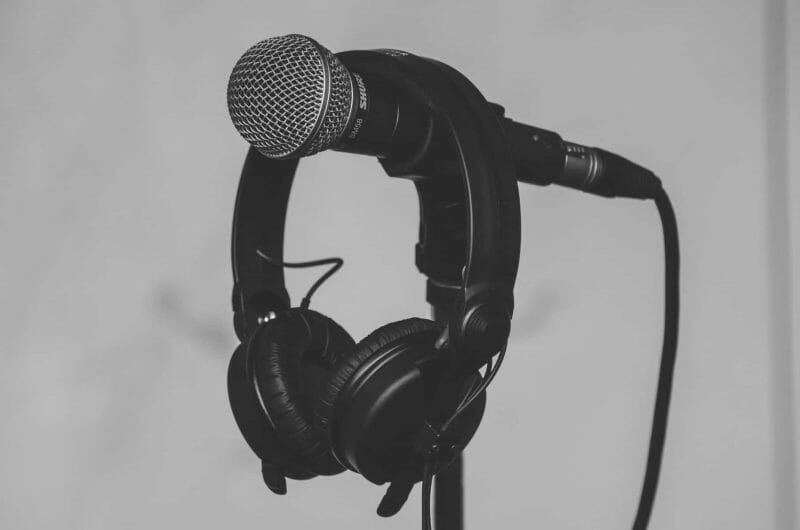
Bi-Directional – A microphone that picks up sound from the front and back, but not the sides.
Bit depth – A measure of the accuracy of a program. The higher the bit depth, the more accurate the output. For instance, running a recording session at 24bits means the audio will be more accurate than if it was running at 16bits.
Buffer size – How much data a computer program can handle at a time. Lower buffer sizes have lower latency, but are more susceptible to crashing. Higher buffer sizes have greater latency, but are less susceptible to crashing. The rule of thumb is to set your buffer size as low as possible when recording and as high as possible when mixing. This setting can be found in your DAW’s preferences.
Cardioid (or Unidirectional) – A unidirectional microphone with a heart-shaped pickup pattern. In other words, a microphone that picks up sounds in front of it, but not behind it.
Channel – Similar to a bus, a pathway through an audio device. For example, sound mixers have multiple input channels and output channels.
Clipping (or Peaking) – Another word for distorting. “Clipping” is usually used when a channel on a DAW or mixing board has too much volume being sent into it. In general, you want to give a channel enough headroom so that clipping doesn’t occur.
Condenser mic – A microphone commonly found in studios with a large frequency range and high sensitivity. Known for being very accurate.
Doubling – Recording a part multiple times to get a “thicker” sound.
Dynamic mic – A microphone found in both studio and live settings with a limited frequency range and lower sensitivity. Known for handling more aggressive or loud instruments.
Headroom – The amount of volume a channel can take before distorting. The louder the sound, the less headroom it has. For example, if a sound is peaking at -5dB, it has 5dB’s of headroom. If it’s peaking at -1dB, it has 1 dB of headroom.
Latency – The amount of delay between between the input and the output of a signal. Latency usually refers to the delay that occurs when someone tries to record something when there are too many plugins on the session. The input (the instrument) is delayed so that the output (the recording) is several milliseconds behind, causing an frustrating delay in a performer’s headphones.
Layering – Recording several copies of one musical part to be performed on top of each other. A more extreme version of doubling.
Mono – The opposite of stereo. A sound that has one source, rather than two.
Omnidirectional (or Omni) – A microphone that picks up sound from all direction.
Phantom power – +48 Volts. The power necessary to get a condenser mic to work. Most audio interfaces have a button that sends this power to a microphone that needs it.
Plosives – Sounds made from the mouth that blow quick bursts of air. Common examples are words with p’s, b’s, t’s, k’s, and d’s.
Polarity – The “direction” of a waveform. When you “flip the polarity” of a waveform, it turns the waveform upside down. Basically, the peaks are where the troughs once were, and vice versa. Polarity buttons (sometimes called phase buttons) are common on audio interfaces to keep stereo inputs in phase with each other.
Pop filter – a foam rubber windscreen that is placed in front of a microphone to reduce the sound of plosives.
Preamp – an amplifier that boosts the incoming signal from a microphone. Without a preamp, the sound from a microphone would be too quiet to use.
Proximity effect – The closer you get to the microphone, the more low frequencies are recorded. This phenomenon is only present when using a condenser or ribbon mic.
Ribbon mic – A microphone commonly found in studios with a high frequency range and sensitivity. Known for “coloring” the sound it records.
Room tone – The tone of the reverb produced in a room. Also refers to how the room “colors” a sound.
Sensitivity – How much sound a microphone can pick up. When the level of the mic’s preamp is increased, the sensitivity is increased. The more sensitive the mic, the more detail and background noise will be recorded.
Sibilance – The sound of an “s” in a word. For example, sit, stay, masks, etc. Usually problematic in vocal recording, as microphones pick up the sibilance sounds more than the rest of the frequency spectrum. One of the most popular ways to fix sibilance is a de-esser.
Stereo – The opposite of mono. A sound that has two sources, rather than one. Creates the illusion of horizontal space in recordings.
Talkback – A mic in the control room of a studio that allows the engineer or producer to talk to the performers who are recording in the studio.
Tape – The medium that sound was recorded on before the transition to computers in the mid-80’s. While technically less accurate than digital recording, tape is sought after for the warmth and aggression it adds to the sounds recorded on it.
